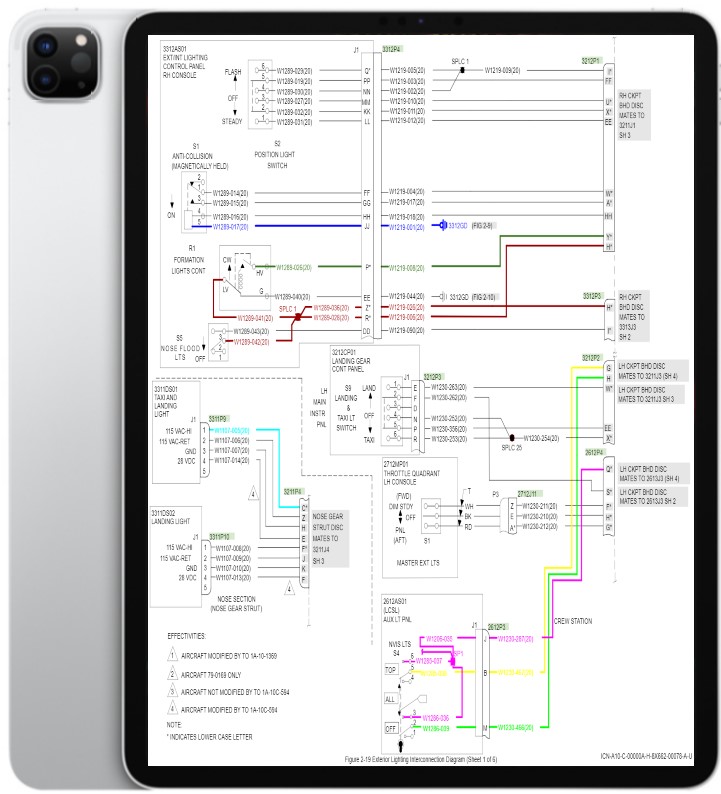IETM / IETP / ETO
Interactive Electronic Technical Manuals (IETMs) or Interactive Electronic Technical Publications (IETPs) (sometimes called Electronic Tech Orders or "ETOs") are technical manuals (such as maintenance, training, user or operations manuals) usually authored in XML or SGML and designed with an interactive user interface and illustrations. IETMs are a portable, electronic "library" which contain thousands of pages of maintenance documentation and graphics and allows end users to locate technical documentation in a more efficient manner, and the digital nature provides a more agile and accurate method of updating technical documentation. HEBCO works with a number of IETM solution providers to provide a sustainable solution that best fits the customer’s functionality requirements.
HEBCO IETM Software Features
XML
XML data allows for the data to be used on a variety of devices. HEBCO's experience in markup language and our revolutionary software make the perfect IETM solution.

Interactive Schematics
Scalable Vector Graphics (SVG) provide print-quality illustrations as well as high-interactivity on devices. Highlight with color, trace wires and print wiring diagrams with ease.
HEBCO data can be delivered using S1000D, DITA or most any other XML standard.
What are IETM Classes?
Type 1:
-
Class I - This Interactive Electronic Technical Manual class follows the structure and format of a printed book, with indexes and table of contents that are hyperlinked into the content of the document. This might be a scanned book with some links added.
-
Class II - This format includes more hyperlinks than Class I, such as figures, tables and section references. A hyperlinked PDF document is the typical example. The document would be authored in XML/SGML.
-
Class III - The difference between IETM Class II and Class III is analogous to the difference between PDF book and a web site. The book structure is discarded; instead the document is structured more freely following the logic of the content. The document can still be printed but it won't necessarily match the presentation on the screen. Hyper linking throughout the document is expected. The document would be authored in a markup language, typically SGML.
Type 2:
-
Class IV - This class now expects the data to be stored in a relational database, obtaining benefits of data integrity and removal of data redundancy. Relationships in the content that are presented as hyperlinks are mapped directly to relations in the database schema. Redundancy in the data that exists in earlier classes should be removed. The sequence of presentation is also different than earlier classes. There is no longer the concept of a static page. Content can change dynamically based on user's navigation and input through the content; the content may now be user specific. It is no longer possible to print a linear format of the document.
-
Class V - In this class, the documentation is now integrated with expert systems that may influence the display of content. For example, the IETM system may aggregate data from a large number of users input; feed that to the expert system that analyzes it and then the result gets fed back to the user through the IETM system. An analogy might be Google search, where search results are improved based on analysis of large data sets of previous queries entered by users.
